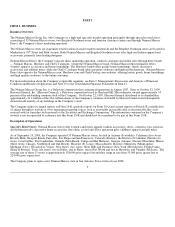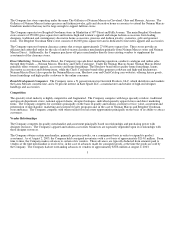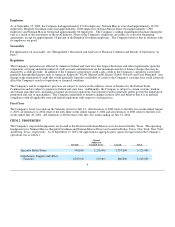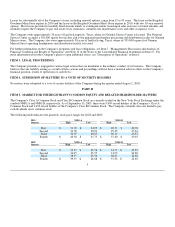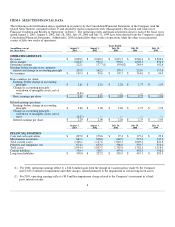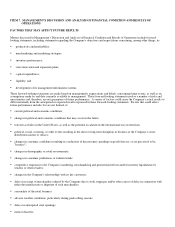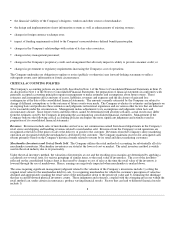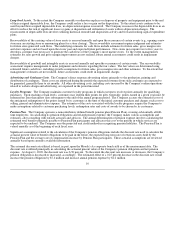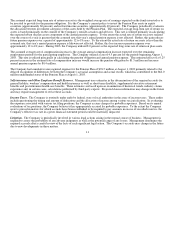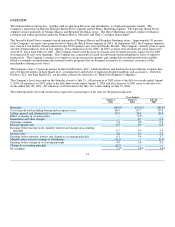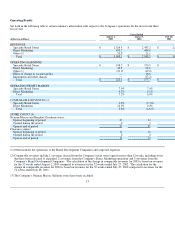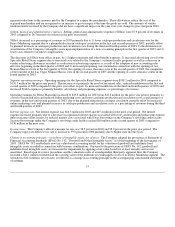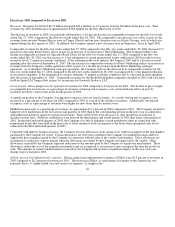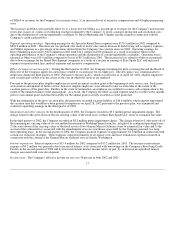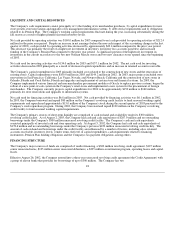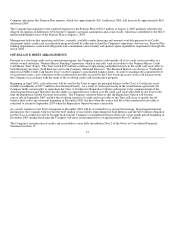Neiman Marcus 2002 Annual Report Download - page 15
Download and view the complete annual report
Please find page 15 of the 2002 Neiman Marcus annual report below. You can navigate through the pages in the report by either clicking on the pages listed below, or by using the keyword search tool below to find specific information within the annual report.
The assumed expected long-term rate of return on assets is the weighted average rate of earnings expected on the funds invested or to
be invested to provide for the pension obligation. It is the Company's current policy to invest the Pension Plan assets in equity
securities (approximately 60 percent) and in fixed income securities (approximately 40 percent). The Company periodically evaluates
the allocation between investment categories of the assets held by the Pension Plan. The expected average long-term rate of return on
assets is based principally on the counsel of the Company's outside actuaries and advisors. This rate is utilized primarily in calculating
the expected return on plan assets component of the annual pension expense. To the extent the actual rate of return on assets realized
over the course of a year is greater than the assumed rate, that year's annual pension expense is not affected. Rather, this gain reduces
future pension expense over a period of approximately 12 to 18 years. To the extent the actual rate of return on assets is less than the
assumed rate, that year's annual pension expense is likewise not affected. Rather, this loss increases pension expense over
approximately 12 to 18 years. During 2003, the Company utilized 8.0 percent as the expected long-term rate of return on plan assets.
The assumed average rate of compensation increase is the average annual compensation increase expected over the remaining
employment periods for the participating employees. The Company utilized a rate of 4.5 percent for the periods beginning August 1,
2003. This rate is utilized principally in calculating the pension obligation and annual pension expense. The estimated effect of a 0.25
percent increase in the assumed rate of compensation increase would increase the pension obligation by $1.5 million and increase
annual pension expense by $0.4 million.
The Company had cumulative unrecognized expense for the Pension Plan of $76.5 million at August 1, 2003 primarily related to the
delayed recognition of differences between the Company's actuarial assumptions and actual results, which has contributed to the $62.0
million underfunded status of the Pension Plan at August 1, 2003.
Self-insurance and Other Employee Benefit Reserves. Management uses estimates in the determination of the required accruals for
general liability, workers' compensation and health insurance as well as short-term disability, supplemental executive retirement
benefits and postretirement health care benefits. These estimates are based upon an examination of historical trends, industry claims
experience and, in certain cases, calculations performed by third-party experts. Projected claims information may change in the future
and may require management to revise these accruals.
Income Taxes. The Company is routinely under audit by federal, state or local authorities in the areas of income taxes. These audits
include questioning the timing and amount of deductions and the allocation of income among various tax jurisdictions. In evaluating
the exposure associated with various tax filing positions, the Company accrues charges for probable exposures. Based on its annual
evaluations of tax positions, the Company believes it has appropriately accrued for probable exposures. To the extent the Company
were to prevail in matters for which accruals have been established or be required to pay amounts in excess of recorded reserves, the
Company's effective tax rate in a given financial statement period could be materially impacted.
Litigation. The Company is periodically involved in various legal actions arising in the normal course of business. Management is
required to assess the probability of any adverse judgments as well as the potential range of any losses. Management determines the
required accruals after a careful review of the facts of each significant legal action. The Company's accruals may change in the future
due to new developments in these matters.
11


